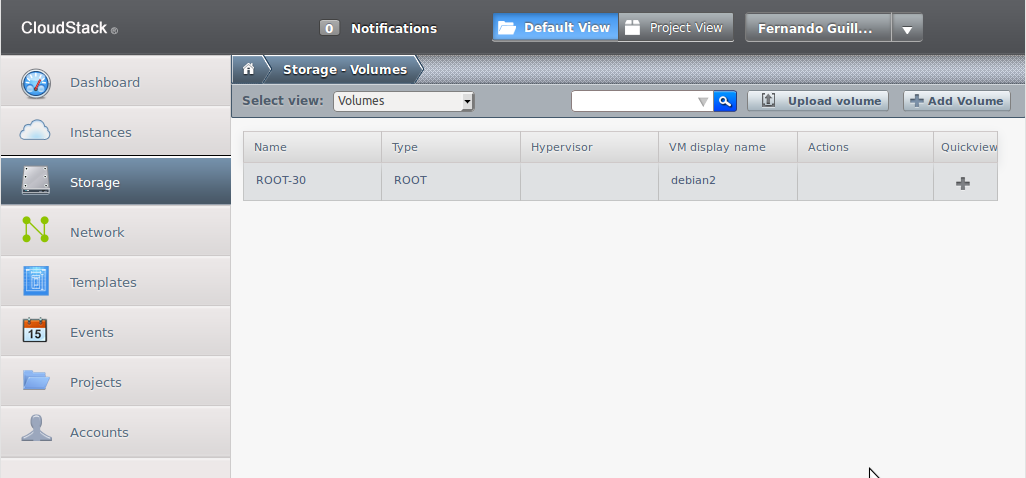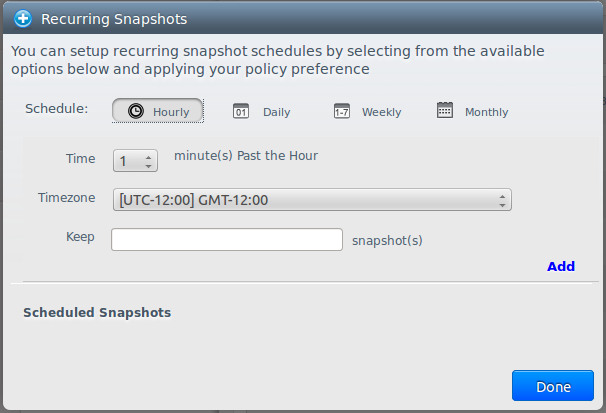Snapshots
Snapshots are instantaneous captures of a VM disk in a particular moment in time. They can be done manually or automatically and periodically using a set of rules.
Snapshot management is done in the “Storage” screen:

In the dropdown “Select view” we can choose between displaying a volume or a snapshot list. It is always possible to see the snapshots of a particular volume if we first select it to see its details and then push the “View snapshots” button.
When selecting a volume the following action bar is shown:

Manually creating a snapshot
 After requesting confirmation the snapshot is made. It is a slow process and its duration depends on the volume size and on the network usage at that moment. In the snapshots list we can check its state:
After requesting confirmation the snapshot is made. It is a slow process and its duration depends on the volume size and on the network usage at that moment. In the snapshots list we can check its state:
- “BackingUp” while in process.
- “BackedUp ” when completed.
Create periodic snapshots
 When choosing this option a screen appears to configure the snapshot periodicity:
When choosing this option a screen appears to configure the snapshot periodicity:

Snapshots can be done with the following periodicity:
- “hourly”: each hour at a specific minute.
- “daily”: each day at a specific hour.
- “weekly”: each week at a specific day and hour.
- “monthly”: each month at a specific day and hour.
All periodicities have a “Keep x snapshots” parameter where x is the snapshots number to hold. If we choose one (recommended) each new snapshot will overwrite the previous.
A new snapshot will be added to the list when we click “Add” and the process can be repeated till the “Done” button id chosen.
Recover an snapshot
A partir de la lista de snapshots, seleccionando una de ellas podremos recuperar un snapshot creando un volumen de tipo “data disk” o creando un “template”.